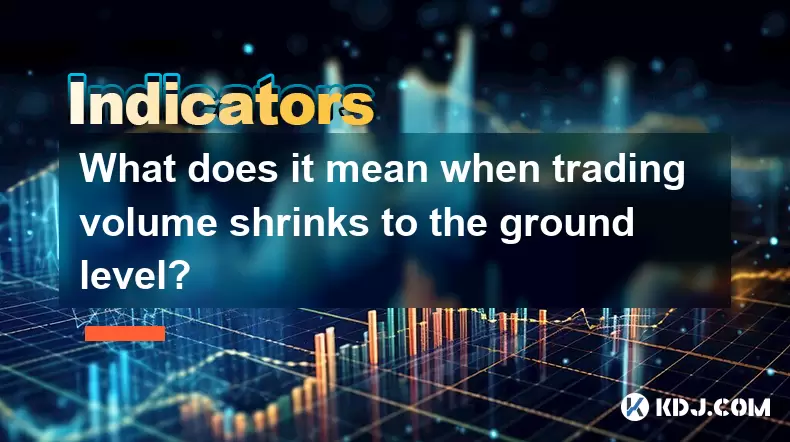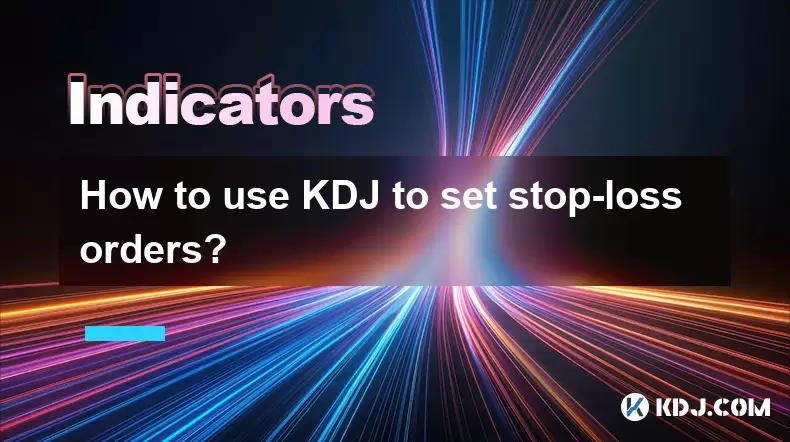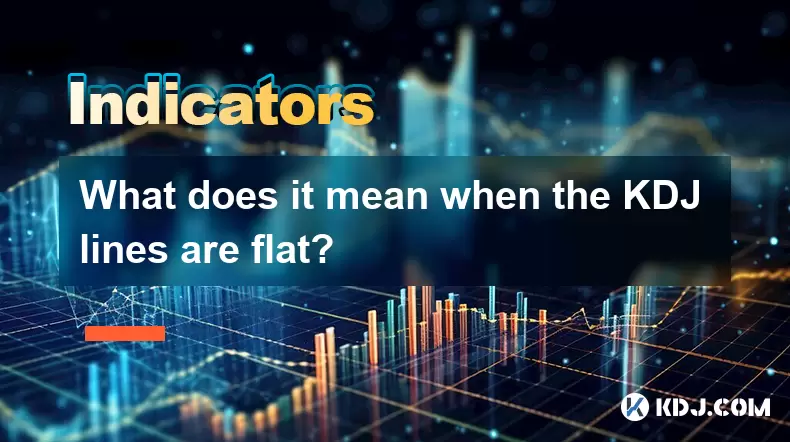-
 Bitcoin
Bitcoin $114700
-3.36% -
 Ethereum
Ethereum $3619
-6.51% -
 XRP
XRP $2.926
-7.66% -
 Tether USDt
Tether USDt $0.9998
-0.02% -
 BNB
BNB $768.6
-4.90% -
 Solana
Solana $168.2
-7.52% -
 USDC
USDC $0.9999
0.00% -
 Dogecoin
Dogecoin $0.2045
-9.02% -
 TRON
TRON $0.3243
-0.27% -
 Cardano
Cardano $0.7208
-8.45% -
 Hyperliquid
Hyperliquid $39.74
-9.17% -
 Stellar
Stellar $0.3882
-8.79% -
 Sui
Sui $3.481
-11.93% -
 Chainlink
Chainlink $16.52
-9.04% -
 Bitcoin Cash
Bitcoin Cash $556.7
-4.79% -
 Hedera
Hedera $0.2444
-11.40% -
 Avalanche
Avalanche $21.96
-8.51% -
 Ethena USDe
Ethena USDe $1.001
-0.02% -
 UNUS SED LEO
UNUS SED LEO $8.950
0.15% -
 Toncoin
Toncoin $3.425
-2.33% -
 Litecoin
Litecoin $104.4
-5.94% -
 Shiba Inu
Shiba Inu $0.00001212
-7.49% -
 Polkadot
Polkadot $3.630
-6.98% -
 Uniswap
Uniswap $9.165
-10.12% -
 Monero
Monero $306.8
-3.10% -
 Dai
Dai $0.9999
-0.01% -
 Bitget Token
Bitget Token $4.360
-3.43% -
 Pepe
Pepe $0.00001049
-9.59% -
 Cronos
Cronos $0.1352
-8.67% -
 Aave
Aave $256.5
-8.03%
What does it mean when trading volume shrinks to the ground level?
Shrinking trading volume in crypto often signals reduced market participation, leading to higher volatility, slippage, and potential manipulation, especially in low-liquidity altcoins.
Jul 31, 2025 at 08:58 pm

Understanding the Meaning of Shrinking Trading Volume in Cryptocurrency Markets
When trading volume in the cryptocurrency market shrinks to the ground level, it indicates a significant reduction in the number of assets being bought and sold over a given period. This phenomenon often reflects diminished market participation, where traders and investors are either taking a wait-and-see approach or have exited the market temporarily. Low volume typically follows periods of high volatility or prolonged price stagnation. In such conditions, even small trades can cause disproportionate price movements due to the lack of liquidity. This environment can make it difficult to execute large orders without affecting the market price, a condition known as slippage.
It’s important to distinguish between low volume during consolidation phases and low volume during bearish trends. In consolidation, shrinking volume may suggest the market is building energy for a breakout. In downtrends, it might signal waning interest or capitulation, where remaining holders are reluctant to sell, but new buyers are not entering. Monitoring volume alongside price action helps traders identify whether a trend is losing momentum or preparing for a reversal.
How to Identify Ground-Level Trading Volume on Charts
To detect when volume has dropped to ground level, traders use volume bars displayed beneath price charts on platforms like TradingView, Binance, or Coinbase Pro. These bars represent the total trading activity for each time interval—hourly, daily, or weekly. When these bars become consistently shorter over several periods, it indicates declining volume.
- Open your preferred trading platform and load a cryptocurrency pair such as BTC/USDT.
- Locate the volume indicator, usually found at the bottom of the chart.
- Compare current volume bars to historical levels during active trading phases.
- Look for volume that is less than 30% of the 30-day average volume—this often qualifies as "ground level."
- Overlay a moving average on the volume (e.g., 20-period MA) to visualize trends in volume activity.
Some traders also use tools like the Volume Oscillator or On-Balance Volume (OBV) to detect subtle shifts. A flat or declining OBV line during sideways price movement reinforces the idea of weakening participation. Ground-level volume is often accompanied by narrow price ranges and low volatility, observable through indicators like Average True Range (ATR) dropping below key thresholds.
Implications of Low Volume for Market Structure
A market with severely reduced trading volume undergoes structural changes that affect how price discovery occurs. In high-volume environments, prices reflect the consensus of many participants. When volume dries up, price becomes more manipulatable by large holders (often called "whales"). These actors can move the market with relatively small orders, creating false breakouts or sudden dips.
Liquidity providers, such as market makers on centralized exchanges, may reduce their activity during low-volume periods. This leads to wider bid-ask spreads, increasing the cost of entering and exiting positions. For decentralized exchanges (DEXs), low volume can result in higher impermanent loss for liquidity pool providers, discouraging further participation.
Additionally, low volume impacts technical analysis reliability. Patterns like head and shoulders or double bottoms require confirmation through volume to be valid. Without volume confirmation, such patterns may fail, leading to false signals. Traders relying on volume-based strategies—like volume-weighted average price (VWAP)—may find their tools less effective during these phases.
Strategies for Trading During Extremely Low Volume Periods
Navigating markets with ground-level volume requires adjustments to standard trading practices. The primary goal is risk preservation rather than aggressive profit-taking.
- Avoid placing large market orders; use limit orders to control execution price.
- Tighten stop-loss levels to account for potential volatility spikes when volume returns.
- Focus on high-market-cap cryptocurrencies like Bitcoin or Ethereum, which tend to retain relative liquidity.
- Reduce position sizes to minimize exposure to erratic price swings.
- Monitor order book depth to assess real-time liquidity on exchanges.
Scalping becomes riskier due to wider spreads and lower trade frequency. Swing traders may choose to stay out of the market until volume confirms renewed interest. Algorithmic traders should adjust their bots to filter out low-volume candles or disable trading during predefined low-volume windows. Using volume filters in trading bots can prevent execution during unreliable conditions.
What Causes Trading Volume to Drop to Minimal Levels?
Several factors contribute to the collapse of trading volume in crypto markets. One major cause is macroeconomic uncertainty, such as regulatory crackdowns or global financial instability, which makes investors hesitant to engage. Seasonal trends also play a role—volume often declines during holiday periods like Christmas or Lunar New Year when institutional and retail traders are less active.
Another factor is market fatigue after extended rallies or sell-offs. After a sharp price move, participants may pause to reassess, leading to consolidation with low volume. Exchange-specific issues, such as downtime, withdrawal suspensions, or security breaches, can also cause temporary volume drops on affected platforms.
In the case of smaller altcoins, volume may dry up if the project loses community interest or if influencers and developers stop promoting it. Tokenomics issues, such as large portions of supply locked in inactive wallets or held by a few addresses, further reduce circulating liquidity. Exchange delistings or removal from major trading pairs (e.g., delisting from USDT pairing) can abruptly cut off trading avenues, leading to near-zero volume.
How to Monitor and React to Volume Recovery
Recognizing when volume begins to rise again is crucial for timing re-entry into the market. A sustained increase in volume, especially when aligned with price movement, signals renewed conviction.
- Watch for volume bars exceeding the 10-day moving average by 50% or more.
- Confirm with price breaking out of a tight range on higher volume.
- Use momentum indicators like MACD or RSI to see if rising volume coincides with strengthening momentum.
- Check multiple exchanges to ensure the volume surge isn’t isolated to one platform, which could indicate manipulation.
When volume returns, early entrants may gain an advantage. However, it’s wise to wait for two to three consecutive high-volume periods to confirm the trend before committing large capital. On-chain metrics, such as increasing transactions or active addresses, can support volume-based observations.
FAQs
Why does low trading volume make price manipulation easier?
Low trading volume reduces the number of active buyers and sellers, meaning fewer transactions are needed to influence the price. Large traders can place orders that represent a significant portion of the market, causing sharp price swings without needing massive capital. This is especially common in low-cap altcoins with shallow order books.
Can trading volume reach zero in cryptocurrency markets?
While extremely rare, some illiquid altcoins may experience periods of zero or near-zero trading volume for hours or even days, especially on smaller exchanges. This typically happens when there is no buyer-seller match. However, major cryptocurrencies like Bitcoin always maintain some level of volume due to global demand.
How does low volume affect stop-loss orders?
During low-volume periods, stop-loss orders may execute at much worse prices than expected due to gaps in the order book. If liquidity is thin, a stop-loss triggered at $30,000 for BTC might fill at $29,500 or lower, resulting in significant slippage. Using stop-limit orders can help mitigate this risk.
Is shrinking volume always a bearish signal?
Not necessarily. While prolonged low volume during a downtrend can indicate bearish sentiment, it can also precede a breakout. If price consolidates on low volume and then surges upward with high volume, it may signal the start of a new bullish phase. Context and confirmation are essential.
Disclaimer:info@kdj.com
The information provided is not trading advice. kdj.com does not assume any responsibility for any investments made based on the information provided in this article. Cryptocurrencies are highly volatile and it is highly recommended that you invest with caution after thorough research!
If you believe that the content used on this website infringes your copyright, please contact us immediately (info@kdj.com) and we will delete it promptly.
- Australia vs Lions: Unleashing Betting Offers and Free Bets for the Thrilling Finale
- 2025-08-01 16:30:11
- Bitcoin, Satoshi, and the Echoes of Ancient Wisdom in DeFi
- 2025-08-01 16:50:12
- ONDO Tokens: Could They Mint the Next Crypto Millionaires?
- 2025-08-01 16:30:11
- Satoshi, Meme Coins, and Substance: A New Era?
- 2025-08-01 16:50:12
- Decoding the Roar: Australia, the Lions, and the Betting Odds
- 2025-08-01 16:55:48
- Bitcoin Price Plummets Amid Trump Tariffs: A Market Sell-Off Deep Dive
- 2025-08-01 16:55:48
Related knowledge

How do I secure my private key?
Aug 01,2025 at 05:14pm
Understanding the Importance of Private Key SecurityYour private key is the most critical component of your cryptocurrency ownership. It is a cryptogr...

How does the KDJ indicator apply to decentralized finance (DeFi) tokens?
Aug 01,2025 at 04:43pm
Understanding the KDJ Indicator in Technical AnalysisThe KDJ indicator is a momentum oscillator derived from the Stochastic Oscillator, widely used in...

What is the difference in KDJ signal interpretation between a trending and a ranging market?
Aug 01,2025 at 03:56pm
Understanding the KDJ Indicator in Cryptocurrency TradingThe KDJ indicator is a momentum oscillator widely used in cryptocurrency trading to identify ...

Does the KDJ indicator work well for low-liquidity crypto assets?
Aug 01,2025 at 02:01pm
Understanding the KDJ Indicator in Cryptocurrency TradingThe KDJ indicator is a momentum oscillator derived from the Stochastic Oscillator, widely use...

How to use KDJ to set stop-loss orders?
Aug 01,2025 at 04:28pm
Understanding the KDJ Indicator in Cryptocurrency TradingThe KDJ indicator is a momentum oscillator widely used in technical analysis within the crypt...

What does it mean when the KDJ lines are flat?
Aug 01,2025 at 03:22pm
Understanding the KDJ Indicator in Cryptocurrency TradingThe KDJ indicator is a momentum oscillator widely used in cryptocurrency technical analysis t...

How do I secure my private key?
Aug 01,2025 at 05:14pm
Understanding the Importance of Private Key SecurityYour private key is the most critical component of your cryptocurrency ownership. It is a cryptogr...

How does the KDJ indicator apply to decentralized finance (DeFi) tokens?
Aug 01,2025 at 04:43pm
Understanding the KDJ Indicator in Technical AnalysisThe KDJ indicator is a momentum oscillator derived from the Stochastic Oscillator, widely used in...

What is the difference in KDJ signal interpretation between a trending and a ranging market?
Aug 01,2025 at 03:56pm
Understanding the KDJ Indicator in Cryptocurrency TradingThe KDJ indicator is a momentum oscillator widely used in cryptocurrency trading to identify ...

Does the KDJ indicator work well for low-liquidity crypto assets?
Aug 01,2025 at 02:01pm
Understanding the KDJ Indicator in Cryptocurrency TradingThe KDJ indicator is a momentum oscillator derived from the Stochastic Oscillator, widely use...

How to use KDJ to set stop-loss orders?
Aug 01,2025 at 04:28pm
Understanding the KDJ Indicator in Cryptocurrency TradingThe KDJ indicator is a momentum oscillator widely used in technical analysis within the crypt...

What does it mean when the KDJ lines are flat?
Aug 01,2025 at 03:22pm
Understanding the KDJ Indicator in Cryptocurrency TradingThe KDJ indicator is a momentum oscillator widely used in cryptocurrency technical analysis t...
See all articles

























































































